Signing in with an example account.
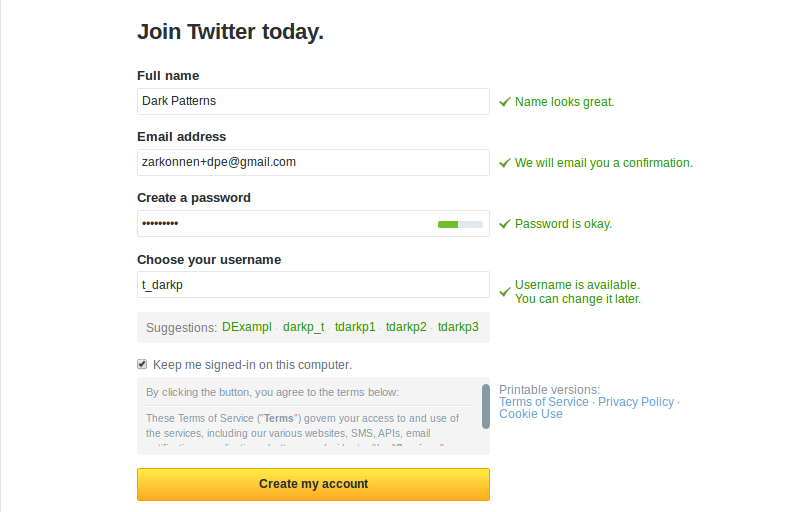
Twitter puts me into a mandatory wizard-type interface to set up my account.

It then wants me to follow some people. Note that there is no way to skip this step. You cannot use your Twitter account until you have followed a bunch of people. Twitter helpfully provides a list of celebrities.
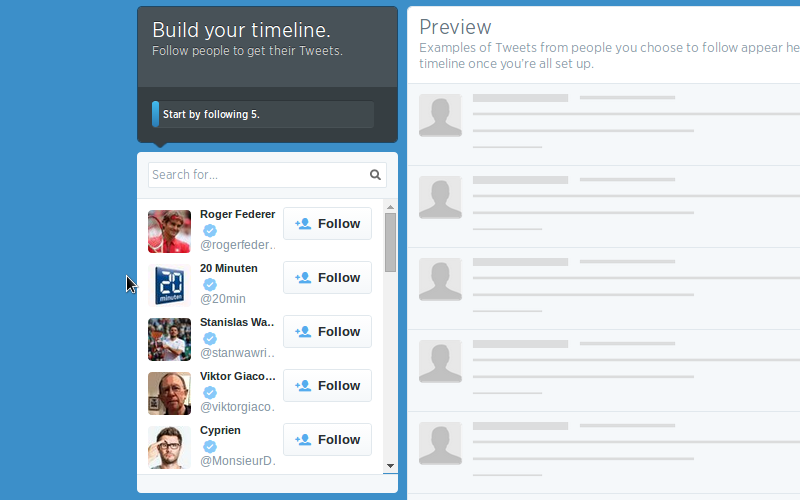
Once I've chosen three, it relents and lets me move on.

Or... not. Here's much the same thing again, with the suggestions grouped by topic. Again, you need to select at least two either by using their suggestions or using the search box right now to enter accounts you want to follow. I would guess that people normally follow accounts by clicking on "Follow" on their profiles, so having to enter the name of the account manually steers you towards using the suggestions - which is the point.
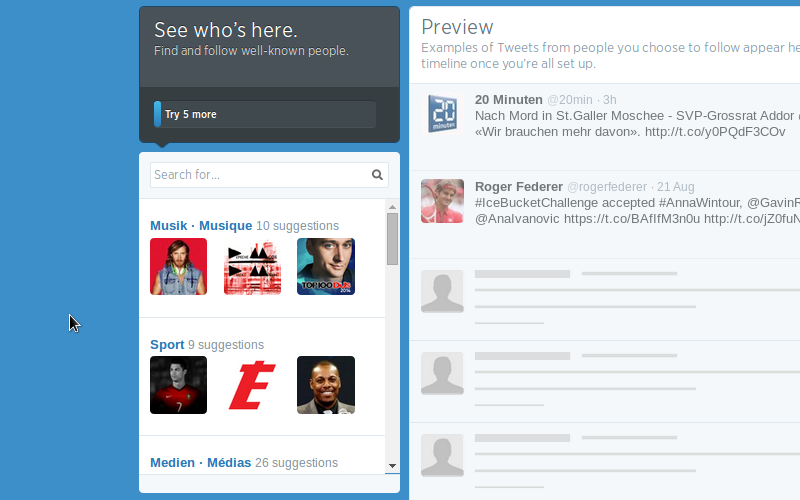
Note that for me, the suggestions include the account of a seriously right-wing Swiss party. Thanks, Twitter!
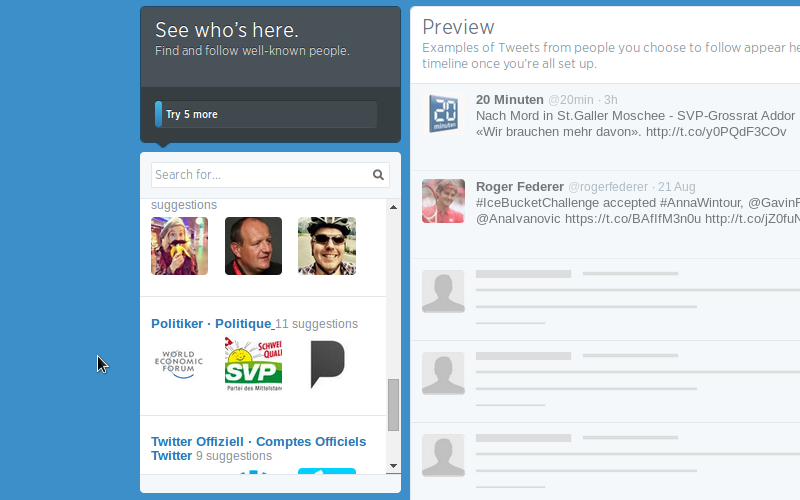
We're nearly there! Now it just wants permission to rummage through my mail accounts. But what's this? There is a skip option this time? Can't see it? Look very carefully at the bottom left and you can just about see a tiny light grey on lighter grey link. You can tell they would very much like to just get rid of it altogether.
This is what dark patterns are about: you are given the option to skip, sure, but the visibility of that option is extremely limited in an attempt to steer you towards the behavior Twitter wants.
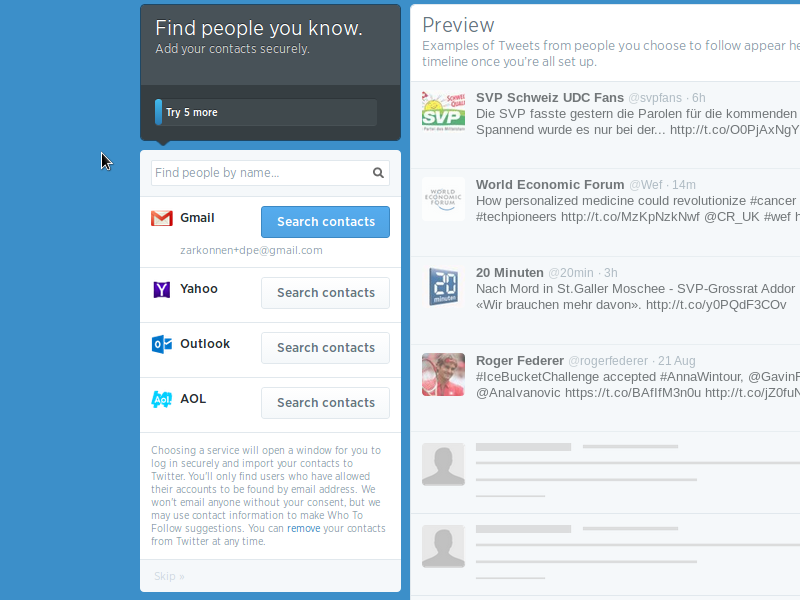
Finally, the wizard wants a picture and a bio, which is comparatively reasonable. Again, there is a nigh-on-invisible skip link.
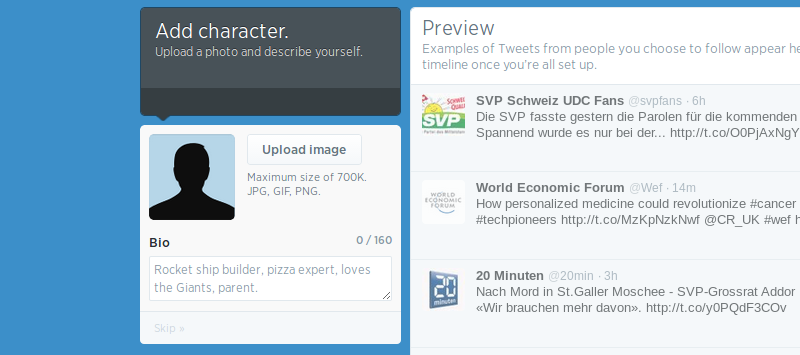
We made it! We have a Twitter account! We only had to follow six random accounts served up to us by Twitter's algorithms, which pick right-wing parties as suggestions on the basis that they are popular.

The overarching question here is whether Twitter is a communications medium or a broadcasting medium. Looking at the sign-up process, it is clear what Twitter wants it to be: a system for consuming "content". Not because that's what people necessarily want, but because that's something they think they can monetize.
Needless to say, this makes me pretty wary of Twitter's plans to mess around with the way the timeline works, including tweets by people you don't follow, changing the semantics of favorites, etc. But the lock-in effect is huge. I use Twitter constantly, and it would take a lot to make me abandon it, so in a sense they can get away with this sort of stuff - for now.